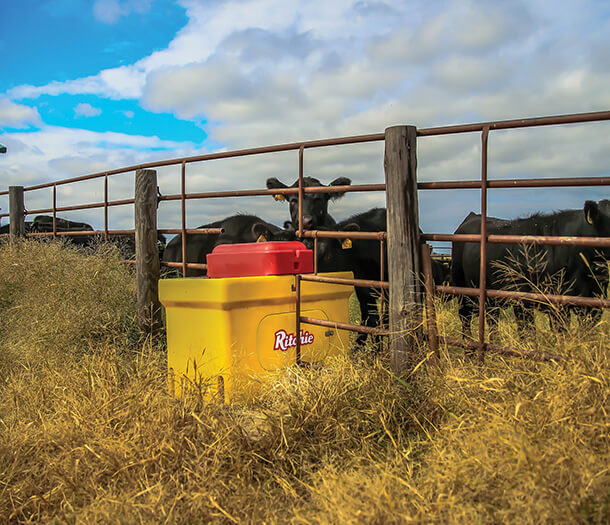One of the biggest steps a cattle owner can take in responsible hydration is using automatic waterers. With benefits ranging from improved health and performance to environmental protection, there really is no good reason to do it any other way.
The Comfort of Knowing It’s Done
Daily water requirements for cattle vary depending on age, size, activity, pregnancy, lactation, air temperature, time of year, location of the water source and dry matter intake. Anywhere from six to 35 gallons can be needed per animal depending on the circumstance.
“Cattle have very little ability to adapt to any type of water restriction,” said Daniel Loy, Ph.D., professor of animal science at Iowa State University and director of the Iowa Beef Center. “In general terms, cattle need to drink about a gallon of water for every one pound of dry matter consumed. When water is restricted cattle simply don’t eat as much and your daily rate of gain is reduced, and production goals will be impacted.”
Because our cattle need so much water to stay hydrated, it can be stressful to provide—especially when there is an emergency or something goes unexpectedly wrong. To manually deliver water or rely on leading your animals to natural sources like ponds or streams is to accept a level of risk that could put their lives in danger.
By using automatic waterers, we can establish a peace of mind that isn’t possible otherwise. Knowing our animals will always have access to a steady supply of clean, fresh, temperature-appropriate water is a literal and metaphorical weight off our shoulders.
An Environment in Need
You might not immediately think of environmental impact when you think of cattle watering, but the way we water makes a huge difference for the wellbeing of our land and our planet.
The days of cattle accessing streams and ponds are dwindling for many reasons, including water quality concerns and environmental impact. By leading animals to and from these natural sources of water, we’re doing damage to the streambanks and land areas around ponds. This leads to dirtier water downstream and promotes the growth of algae and other harmful bacteria.
There’s also the spillage associated with refilling standard troughs or buckets. Automatic waterers help us to preserve water by delivering a constant supply that never needs to be manually refilled.
Better Water. Better Health.
The right amount and type of water is vital for the health and performance of our cattle, and keeping it clean can help prevent illness associated with bacteria and insect activity. When the quality of our water stays consistent, it reduces worry associated with the wellbeing of ourselves and our animals.
One of the most obnoxious and potentially dangerous insects to both humans and cattle are mosquitos. These bloodsuckers become more of a nuisance during warm weather, and while they’re difficult to avoid, there are ways to reduce their numbers, especially on your land where you and your animals are most vulnerable.

Mosquito eggs require standing water to hatch into successful larvae, and all mosquitos must have water to complete their life cycles. Breeding happens in stagnant, standing water, and as little as a teaspoon or bottle cap’s worth that’s been standing for a week or more is enough for eggs to develop into adult mosquitoes.
Because of this, one of the places you’ll find the most insect activity is around your cattle’s water source. When buckets are used or animals are led to natural water sources, they will be exposed to more mosquitos, so it’s advantageous to use automatic waterers instead. The smaller water surfaces and fresh, flowing water means breeding ground for insects. The water stays cleaner for longer and with less maintenance.
There’s also the risk of our cattle not getting the proper hydration based on water temperature. Cattle like it very specific—not too warm and not too cool. Because of this, some won’t drink the proper amount in extreme temperatures. This is especially risky when it’s cold outside and the water freezes.
The Weight of What You Save
At the end of the day, automatic waterers pay for themselves, and not just monetarily. While the initial installation may seem complicated, these units prevent loss of water, expensive cattle and human health treatments, lost production cost and damage to the environment. But perhaps most importantly, they provide us with a peace of mind that our animals—our livelihoods—are healthy, happy, and always have access to the exact right amount of what’s most important.
To learn more about automatic watering and how you can take steps towards responsible hydration, visit ritchiefount.com, today.






